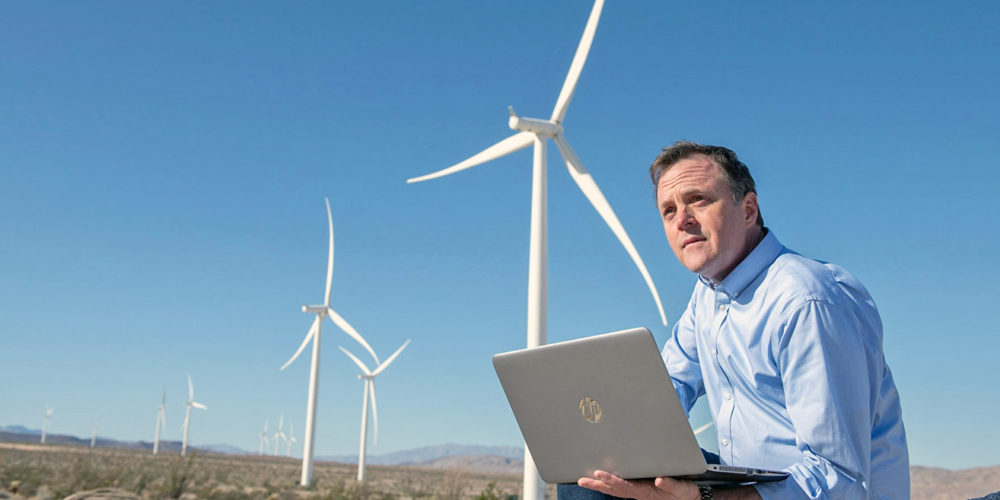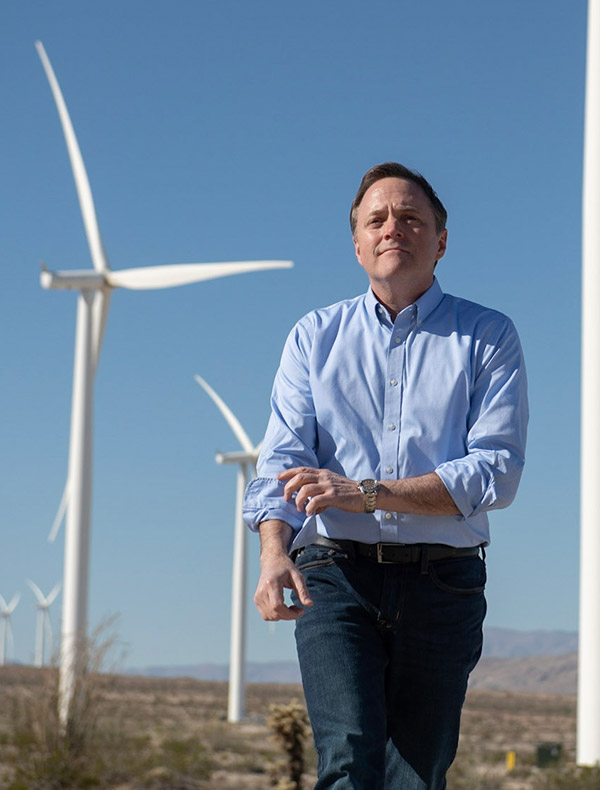David Rogers’ degree in aeronautical engineering didn’t lead him to a career in aviation; instead, the chief technology officer at Ziyen Energy is using his structural software expertise to develop a start-up project designed to help a new era of renewable energy take flight.
“Originally I was going to become a pilot, but I discovered that I was more intrigued with the engineering program, so I transferred over and found a lot that kept my interest on the structural side of things as well as the aerodynamic,” Rogers explains. “It was an era of great change — as students we started out on drafting tables, but by the time we graduated we were using CAD.”
Adapting to change became a theme in Rogers’ career: What started as a steady, traditional climb toward a management position eventually morphed into a quick-fire series of career choices that has placed him at the leading edge of developing cryptocurrency for renewable energy projects.
Starting Again, at a Startup
Around 2016, the software company where Rogers served as director of software quality assurance moved into a different business sector, leaving Rogers, then 50, to hustle contract gigs, mostly in the med/tech industry. “One day, I met this gregarious Scotsman on a driving range who was looking for someone to manage the software side of his startup business,” he recalls. At that point, Ziyen’s focus was industry-specific government and private contracts for bid. For example, the owners of a cement company could sign up to receive push-notification alerts when new construction contracts had been posted that they could potentially bid on.
From there, Ziyen founder and CEO Alastair Caithness noticed that many contracts crossing his desk involved oil wells in Texas and the Illinois Basin, which had been abandoned during the most recent industry bust. “These unused wells were sitting around like Solo cups after a barbecue,” Rogers says, “and while larger companies wouldn’t bother with them, for a smaller company, a $30 million oil field looks good on the bottom line.”
“Everyone says we need to move from traditional to renewable energy, but that’s not a matter of just flipping a switch. We need to plan that transition.”
Originally, Caithness suggested acquiring the wells in terms of interest — taking advantage of existing wells, rather than drilling in pristine resources — and, in an ironic turn, using wind turbines to power the oil production.
“Because of this boutique idea, Ziyen began to be invited to join conferences with some big energy players,” Rogers says. “We were on the dais with people from Shell, BP and Exxon, and as part of those interactions we heard that many companies had begun looking toward blockchain for their secure contracts. We thought, ‘How can Ziyen apply blockchain?’”
That’s when Caithness’ original concept began to evolve. Instead of a small scale, well-by-well approach, Ziyen could use blockchain as the catalyst to transform the global energy sector from fossil-based to zero-carbon before the second half of this century.
Diving Into Blockchain Technology
With blockchain — a shared, decentralized information record that can pass information from one entity to another in an automated, secure manner — one party initiates a transaction by creating a block, which must be verified by a chain of network computers before the next step begins. The best-known users of blockchain, such as Bitcoin, use it for monetary transactions because blockchain requires no transaction or currency conversion charges from banks or credit card companies.
Unlike the unregulated cryptocurrency Bitcoin, however, Ziyen was proposing a new digital currency, called ZiyenCoin, backed by energy assets, that would report to the U.S. Securities and Exchange Commission and follow the agency’s guidelines. Information about each new project, including geological and financial statements and tax distributions, would be available on a newly developed Energy Tokens* platform, giving the public the opportunity to invest in its equity through “tokens,” or digital shares. Blockchain tokens representing the asset would be tradable on secondary markets, just like traditional securities. By the end of 2020, the Energy Tokens platform will make it possible for users to invest in oil and gas projects alongside renewable energy projects for the first time in history.
“Today, if someone wants to support renewable energy and the reduction of carbon emissions, they’re fairly limited in their options. They can drive an electric car, put solar panels on their roof, perhaps buy stock in Tesla,” Rogers says. “The tokenization of assets of renewable projects will allow much broader, democratic opportunity for people on the street to invest in these projects.”
Refinancing Renewable Energy
In four years, Rogers has helped Ziyen pivot from providing bidding-contract software to purchasing oil leases, to producing blockchain technology that supports renewable energy projects. “This whole thing grew up around us,” he says. “You don’t want to end up in a 9-to-5 job you’re bored with. Here, I’m exposed to new, cutting-edge ideas every day, and I think that’s terribly exciting. Having the opportunity to get into something that’s going to be new to the market and enable companies to ‘bootstrap’ projects that much faster is so worthwhile.
“Everyone says we need to move from traditional to renewable energy, but that’s not a matter of just flipping a switch,” Rogers says. “We need to plan that transition. Any way we can help leverage our technology to do this is hugely exciting.”
*The original story was edited on Feb. 3, 2021, to reflect a brand name change from the ZYEN platform to the Energy Tokens platform.

